Making Invisible Histories Visible
Page Navigation
- Making Invisible Histories Visible
- Lesson Plans and Resources
- iBooks on Omaha and Nebraska History for Primary Students
- Omaha Mapping Projects
-
African American Histories
- African American Artists
- African American Athletes & Facilities
- African American Churches
- African American Civil Rights Organizations - 1950s-1960s
- African American Civil Rights
- African American Contributions to Jazz, Gospel, Hip-Hop
- African American Dramatic Arts
- African American Education - Dorothy Eure & Lerlean Johnson
- African American Educators & Education
- African American Firefighters
- African American Homesteaders
- African American Law Enforcement
- African American Migration to Omaha
- African American Musicians of Omaha
- African American Newspapers
- African American Owned Businesses
- African American Politicians
- African American Social Life
- African American Workers at Omaha's Railroads & Stockyards
- African American Workers at the Naval Ammunition Depot in Hastings
- African Americans in the Civil War
- African Americans in Vietnam
- Charles B. Washington - Journalist and Civil Rights Leader
- Elizabeth Davis Pittman - Lawyer/Judge
- Green Book Omaha
- Marlin Briscoe - Professional Football Player
- Native Omaha Days
- Nebraska's Role in the Underground Railroad
- Sen. Edward Danner - Politician & Civil Rights Activist
- Sudanese Refugees
- Tuskegee Airmen
- European and Asian Immigrant Histories
-
Historic Neighborhoods & Buildings
- 24th and Binney/Wirt/Spencer Streets
- 24th and Lake Streets
- Central Park Neighborhood - 42nd and Grand Avenue
- Dahlman Neighborhood - 10th and Hickory Streets
- Hartman Addition Neighborhood - 16th and Williams Streets
- Indian Hills/Southside Terrace Neighborhood - 30th and Q Streets
- Jefferson Square Neighborhood - 16th and Chicago Streets
- Long Neighborhood - 24th and Clark Streets
- Orchard Hill Neighborhood - 40th and Hamilton Streets
- Smithfield Neighborhood - 24th and Ames Avenue
- St. Mary's Neighborhood - 30th and Q Streets
- Latino Histories
- Music Histories
-
Native American Histories
- Black Elk and John G. Niehardt
- Chief Standing Bear and Susette La Flesche Tibbles
- Dr. Susan LaFlesche Picotte - Native American Doctor
- Native American Education and Boarding Schools
- Native Americans in the Military
- Pre-statehood Interaction of Native Americans and Europeans
- Preserving Native American Tradition
- Restoring the Ponca Tribe
- The American Indian Movement in the 1960s and 1970s
- The Indian Congress at the 1898 Trans-Mississippi Exposition
- The Omaha Native American Indian Tribe
- OPS Elementary School History
- Redlining in Omaha
- Nebraska's Role in the Underground Railroad
- The 1898 Trans-Mississippi Exposition
iBooks for Primary Students
-
During the summer of 2013, eight Omaha Public Schools elementary teachers developed an iBook on the topic of Omaha and Nebraska history as it relates to African American history. Each book was written by a local Omaha author and illustrations were created by a local artist. Photographs, documents, and other artifacts included in the book were provided by local community members and through partnership with Great Plains Black History Museum. In 2015, a ninth iBook was created, exploring contemporary Native American history in Omaha.
These books provide supplemental information on the role of African Americans and Native Americans in Omaha's and Nebraska's history. The material expands students' cultural understanding and highlights historical figures that have played a part in building this state. Each book allows students to go beyond the content through analysis activities using photos, documents, and other artifacts. Through these iBooks, students will experience history and its connections to their own cultures and backgrounds.
Link to how iBooks fit 3rd and 4th Grade Literacy and Social Studies Standards, how to access and use the content and an iBooks answer guide.
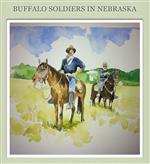
Buffalo Soldiers
Learn about the buffalo soldiers stationed at Fort Robinson, Nebraska. The Ninth and Tenth Cavalry, Corporal William Wilson, Lieutenant John H. Alexander, Chaplain Henry Plummer, 2nd Lieutenant Charles Young and Madge Bailey are featured. Written by Todd Robinson, illustrated by Watie White and developed by OPS teacher Tegwin Turner.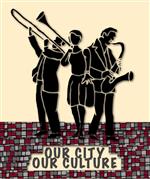
Culture
Lead about the cultural contributions that African Americans have made to Omaha, Nebraska. Preston Love, Florentine Pinkston, The Lincoln Motion Picture Company, The Afro Academy of Dramatic Arts, The Dreamland Ballroom, and Metoyer’s BBQ are featured. Written by Brandon Vogel, illustrated by the late Wanda Ewing, and developed by OPS teacher John-Paul Gurnett. Written by Brandon Vogel, illustrated by the late Wanda Ewing, and developed by OPS teacher John-Paul Gurnett.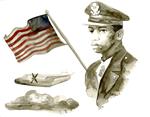
Double Victory
Listen to the story of African Americans during World War II, overseas and on the home front. The Martin Bomber Plant, The Hastings Ammunition Plant, the Tuskegee Airmen, the 530th Quartermaster Battalion, Alfonza Davis, Angelo Meriweather, and Adrienne Higgins are featured. Written by Tunette Powell, illustrated by Rebecca Herskovitz, and developed by OPS teacher Cherie Scholten.
Great Migration
Do you know about the movement of African Americans to Omaha during the Great Migration? This book details the events that pushed African Americans out of the South and pulled them to Omaha, Nebraska in the twentieth century. Lorraine Jackson, Luriese Moore, Willie Milton, Raymond Willis, Dan Desdunes and Pilgrim Baptist Church are featured. Written by Leo Adam Biga, illustrated by Victoria Hoyt and developed by OPS teacher Octavia Butler.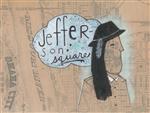
Jefferson Square
The Jefferson Square iBook was written by Sarah Pierce, an Oglala Lakota, and illustrated by Sarah Rowe from the Lakota Nation. The featured story presents the history of Jefferson Square, which was a central part of Omaha’s Indigenous neighborhood. Starting in the late 1940s, many Native Americans moved from reservations into cities as part of the U.S. government’s Indian Relocation program. The iBook features photographs, video clips, discussion and analysis activities, and an interactive timeline of historical events that affected U.S.-Indian relations over time.Notable Nebraskans
Read about the accomplishments of African Americans in Nebraska who paved the way for future generations. Maurtice Ivy, John Johnson, Whitney Young, Malcolm X, Cathy Hughes, Mildred Brown, Marlin Briscoe and Aaron Douglas are featured. Written by Daphne Eck, illustrated by Gina Tolstedt and developed by OPS teacher Lacey Wilson.Peony Park
Learn about the African American civil rights movement in Omaha, Nebraska, through the story of the 1963 Peony Park protests. This eBook talks about the involvement of the Youth NAACP members in desegregating the popular amusement park’s swimming pool. Written by Leo Adam Biga, illustrated by Weston Thomson and developed by OPS teacher Russ Nelsen.People in Your Neighborhood
See the career highlights of professionals in North Omaha, past and present, including restaurant owners, journalists, politicians, and firefighters. Retired Chief Bill Johnson, Captain Anthony Gaines, Mildred Brown, Dr. Marguerite Washington, Chris Rodgers, Ernie Chambers, Charles Hall and Patricia Barron are featured. It includes interactive quizzes, games and multimedia geared toward a third and fourth-grade classroom. Written by Andrew Norman, illustrated by Christina Renfer Vogel and developed by OPS teacher Sarah Adams.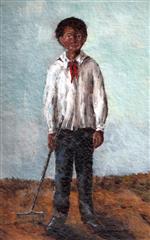
Pioneers
Read about African American homesteaders and settlers in Nebraska through the stories of the Speese and Meehan families and the African American community in DeWitty, Nebraska. Written by Brandon Vogel, illustrated by Paula Wallace and developed by OPS teacher Joey Vickery.

